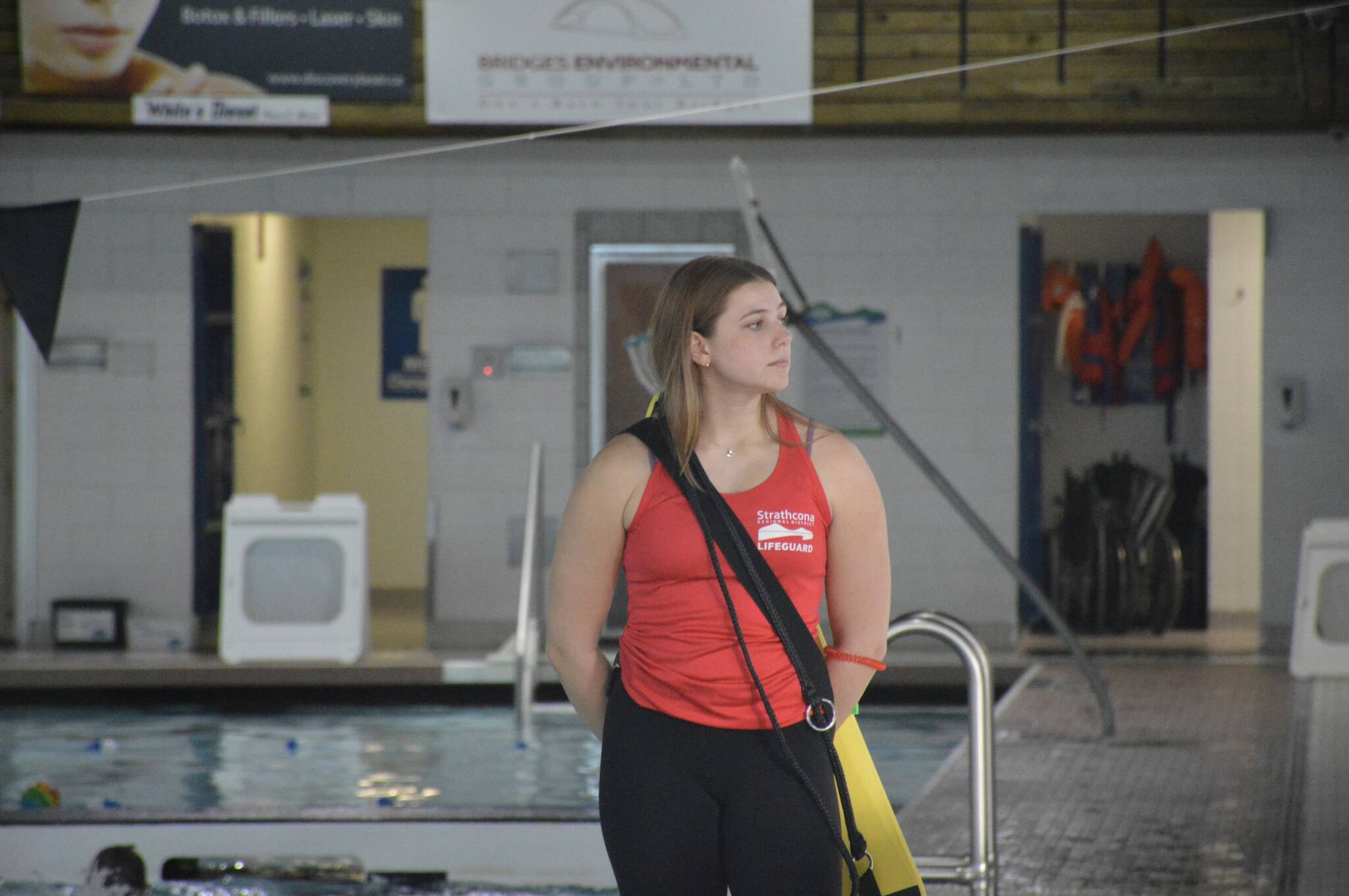The past few years have not been easy for public pools.
Across the country, the pandemic had a notable effect on lifeguards, swimming instructors and pools in general. A lack of classes and courses being held since the pandemic started, career lifeguards starting to retire and a change in work culture have conspired to mean the old ways of doing things just doesn’t fit anymore.
At Strathcona Gardens, a public pool in Campbell River, managers are doing their best to keep up.
The complex’s main pool, leisure pool and hot tub are closed Mondays and operate on different schedules for different days. The website says that the closure is due to staff shortages, but according to SRD HR manager, Laurie Gage, it’s a bit more nuanced than that.
“I think we have about just over 30 people employed in the Aquatic Department,” Gage said. “That’s the mix between between full-time and part-time.
“We’ve got people who are working for us currently that prefer part-time,” Gage said. “We’d love them to (move to) full-time, but they prefer to work part-time.”
That’s not the only issue.
To be a lifeguard for the Strathcona Regional District, a person needs to take a number of courses. These include standard First Aid, CPR level C with AED (Automated External Defibrillator), Swim Instructor, and the National Lifeguard (NL) course. These courses themselves have prerequisites, like Bronze Cross.
Prospective lifeguards also have to be at least 15 years old. Three years ago when the pandemic started, many of the courses that were slated to run were cancelled. So were subsequent courses.
Then, to compound the perfect storm of issues, the people who teach the courses previously mentioned are also lacking.
Shaun Koopman is one of only a few people on north Vancouver Island certified to teach NL courses. Those NL courses are relatively easy to hold. The issue is having enough instructors available to teach them.
Specialized instructor training courses often need to happen in bigger centres. For those in Campbell River, the nearest course scheduled this spring takes place three hours away in Victoria in May. A guard taking that course would be off the deck for at least five days, would have to pay $375 to attened, as well figure out travel and lodging.
Koopman would like to see the provincial government help out.
“Say there’s a new NL instructor in Smithers,” he said, “what’s the financial support look like for them to go to, let’s say, Terrace to do the mentorship course?
“I recently taught a nice lady from Gold River in my last course. She’s a mom and (her taking the course involved travel) back and forth every day; gas isn’t cheap and it’s an an extra two hours or wear and tear on the road,” he said.
“I think anything that the senior levels of government can do to help subsidize that (would help.) Even if they just gave $500 for the National Lifeguard course itself. That would generally cover the cost of the course for somebody as well as almost any significant travel.”
In all, the cost to become a lifeguard is roughly $1,500, by Koopman’s estimation. A $1,500 or so bursary would not be much for the province, but it would make a big difference to a 16-year-old.
“Pools are a public space. We encourage everybody to go there to use it. It’s one of the few true public places that we have left that you could see anybody from any demographic there,” he said. “But if there’s a cost barrier, you’re singling out your potential lifeguards.”
Koopman, who is running a NL course in Gold River as a private contractor, got started in his current career in a pool. He says the benefits to being a lifeguard are many, and it can lead people into various rewarding careers, including overseas and across the country.
The thing is, it has to start somewhere.
“I’ve used my lifeguarding skills, probably four or five times in real life,” he said, adding that it is one area where society actually trusts young people to take on real responsibilities.
“We don’t trust them to vote. We barely trust them to drive a car. And so it’s just such a huge confidence builder for them to take this course and learn about spine boards, oxygen therapy and deep water rescues.”
The Lifesaving Society is offering one-day recertification courses to people with expired NL credentials.
Strathcona Gardens, like any pool, has its limits. Even in the best of times there is a maximum amount of people that are allowed to swim. For each guard on deck, there can be only 40 people in the pool.
Based on the current staffing level, the capacity of the pool is 120 in the leisure pool and hot tub area, and 120 in the main pool, and that is only when they can be fully staffed. Throughout their rotations, guards regularly do head counts and when the capacity is reached the front desk allows people in only when others leave.
“Typically, we see waits of about 15 minutes except for larger groups (6+) who may have to wait longer,” the aquatics department said in an emailed response.
Capacity can also be capped depending on different programs in the pool.
The pandemic also brought on other shifts in how people want to work.
Gage, who runs the HR department for the entire SRD, said she’s seen more people prefer remote work and more flexible hours. There’s also a culture of safety that has arisen out of the pandemic, particularly about coming in to work sick.
“I think in the old days people would drag themselves to work when they were sick,” she said. “People don’t do that now. We don’t want them to do that.”
RELATED: Keeping Campbell River lifeguards sharp
marc.kitteringham@campbellrivermirror.com
Like us on Facebook and follow us on Twitter

